 One of my customers informed me about an update of the EU Delegated Regulation (A regulation shall have general application. It shall be binding in its entirety and directly applicable in all Member States) about the energy labelling of lamps. I read through the regulation and present here a summary.
One of my customers informed me about an update of the EU Delegated Regulation (A regulation shall have general application. It shall be binding in its entirety and directly applicable in all Member States) about the energy labelling of lamps. I read through the regulation and present here a summary.
The regulation states that these new labels need to be introduced a of Sept 2013 (for new products). OliNo will deliver the new labels (6 variants in total) derived from our measurements and completed with the supplier’s name or trade mark and the supplier’s model identifier.
The regulation about energy labelling of electrical lamps and luminaires
Those who would like to read (parts of) the regulation please follow this link.
The difference between a regulation and a directive (according to article 249 of the EU treaty):
A regulation shall have general application. It shall be binding in its entirety and directly applicable in all Member States.
A directive shall be binding, as to the result to be achieved, upon each Member State to which it is addressed, but shall leave to the national authorities the choice of form and methods.
Article 1: Subject matter and scope
The scope as been broadened a lot; not only the lamps for the consumer market but also including lamps for the professional market.
Regulation establishes requirements for labelling of and providing supplementary product information on electrical lamps such as:
(a) filament lamps;
(b) fluorescent lamps;
(c) high-intensity discharge lamps;
(d) LED lamps and LED modules.
The following products shall be excluded from the scope of this Regulation:
(a) lamps and LED modules with a luminous flux of less than
30 lumens;
(b) lamps and LED modules marketed for operation with
batteries;
(c) lamps and LED modules marketed for applications where
their primary purpose is not lighting, such as:
(i) emission of light as an agent in chemical or biological
processes (such as polimerisation, photodynamic
therapy, horticulture, petcare, anti-insect products);
(ii) image capture and image projection (such as camera
flashlights, photocopiers, video projectors);
(iii) heating (such as infrared lamps);
(iv) signalling (such as airfield lamps);
These lamps and LED modules are not excluded when they are marketed for lighting;
(d) lamps and LED modules marketed as part of a luminaire and not intended to be removed by the end-user, except when they are offered for sale, hire or hire purchase or displayed separately to the end user, for example as spare parts;
(e) lamps and LED modules marketed as part of a product whose primary purpose is not lighting. However, if they are offered for sale, hire or hire purchase or displayed separately, for example as spare parts, they shall be included within the scope of this Regulation;
(f) lamps and LED modules that do not comply with requirements becoming applicable in 2013 and 2014 according to Regulations implementing Directive 2009/125/EC of the European Parliament and of the Council (OJ L 285, 31.10.2009, p. 10. );
–> Can anyone explain what precisely is meant with this point (f)?
(g) luminaires that are designed to operate exclusively with the lamps and LED modules listed in points (a) to (c).
Article 2: definitions
The definitions that are of great importance for this regulation are given herewith (see the regulation for all definitions explained).
(1) ‘Light source’ means a surface or object designed to emit mainly visible optical radiation produced by a transformation of energy. The term ‘visible’ refers to a wavelength of 380-780 nm;
(7) ‘Directional lamp’ means a lamp having at least 80 % light output within a solid angle of π sr (corresponding to a cone with angle of 120°);
(8) ‘Non-directional lamp’ means a lamp that is not a directional lamp;
(20) ‘Lamp control gear’ means a device located between the electrical supply and one or more lamps, which provides a functionality related to the operation of the lamp(s), such as transforming the supply voltage, limiting the current of the lamp(s) to the required value, providing a starting voltage and preheating current, preventing cold starting, correcting the power factor or reducing radio interference. The device may be designed to connect to other lamp control gear to perform these functions. The term does not include:
— control devices,
— power supplies converting the mains voltage to another supply voltage that are designed to supply in the same installation both lighting products and products whose primary purpose is not lighting;
Articles 3 and 4 are about the responsibilites of the suppliers and dealers
See the specific text in the regulation.
Article 5: Measurement methods and article 6: Verification procedure
The information to be provided under Articles 3 and 4 shall be obtained by reliable, accurate and reproducible measurement procedures, which take into account the recognised state-of- the-art measurement methods, as set out in Annex V.
However looking into annex V we see only a reference to not further mentioned documents.
Annex V further deals with the control procedure the member states’ authorities shall apply (article 6 refers to this).
Articles 7, 8, 9 and 10.
Article 7 is about the revision period, article 8 the repeal of the old directive 98/11/EG, article 9 describes the transitional provisions and article 10 the entry into force and application; this latter mentions that the regulation applies from 1 Sept 2013, except in the cases listed in article 9.
Annex I: label
OliNo has implemented the label shown for electrical lamps, mentioned under point 1 of annex I. The supplier needs to give to OliNo the correct supplier’s name or trade mark and the supplier’s model identifier.
Label the way it should be when not printed on the package
OliNo has also implemented the creation of the labels for the package, as shown in point 3, both in color as in black and white.
Label to be printed on the packaging. When supplier’s name or trade mark and the supplier’s model identifier are mentioned elsewhere on the packaging, it may be omitted from the label. The same holds for the energy usage per 1000 hours.
OliNo did not implement the labels as mentioned in point 2 of the annex I, which are about labels for luminaires presented at point of sale. If these are needed then please contact OliNo (these need to be developed then).
Annex VI, Energy efficiency classes
Annex VI shows the energy efficiency classes. OliNo did implement the computations. The two parameters of importance are the useful luminous flux and the corrected rated power.
The useful luminous flux is (1) the total rated luminous flux, or (2) the rated luminous flux in a 120 deg cone, or (3) the rated luminous flux in a 90 deg cone, depending on the type of lamp, respectively (a) non-directional, (b) directional with beam angle >= 90 deg but not suitable for accent lighting and (c) other directional lamps. OliNo assumes the correct class and indicates in the measurement report which assumption has been made.
Also mentioned is the corrected rated power. Most of the lamps measured by OliNo have their own lamp control gear connecting the lamp to the grid voltage. In this case there is no correction needed to the rated power hence the corrected rated power is the same as the rated power. However when a lamp is measured that does not have an own lamp control gear then the regulation states a correction must be made. For led lamps it is an increase of 10 % of the rated power to account for an imaginary lamp control gear. OliNo will indicate in the measurement report which assumption has been made.
Annex VII: Method for calculating the energy efficiency index and energy consumption
Of importance is the corrected rated power and the useful luminous flux. This useful luminous flux is coupled to a reference power (a calculation, with the useful luminous flux as input, prescribes a reference rated power).
Then the energy efficiency index is calculated as follows:
EEI = P_corr / P_ref.
And, dependent on the result this lamp falls in a certain energy efficiency class rating from A++ to E.
The corrected rated power:
The reference power and the useful luminous flux:
Performance graph
OliNo also creates and shows a performance graph. This is a graph showing the energy efficiency class areas, with on the x-axis the useful luminous flux and on the y-axis the corrected rated power. The position (a point) in this area shows where the lamp is situated and how far it is away from other energy efficiency class areas.
What follow are two graphs of a lamp with useful luminous flux of 700 lm and a corrected rated power of 10 W. The first graph shows the EEI areas and the position of this lamp in these areas, when the lamp is non-directional. The second case shows the areas and the position of this lamp when it would have been directional (the areas are different)
Performance position of the lamp when it is a non directional type. Indicated are the areas if EEI classes.
Now follows the performance graph at 700 lm and 10 W for directional lamps. See the difference in the areas.
Performance position of a measured lamp when it is a directional type.
What OliNo delivers
It already has been described in the text above, but so summarize the items that OliNo delivers herewith:
OliNo delivers 6 labels. The most complete labels, the labels without names of supplier and lamp, and the labels without the corrected power usage over 1000 hours. Each type in color an black and white. The most complete label in color is shown directly in the measurement report and all labels and then packaged in a zp file and attached to the report, easy for download and eventual usage.
OliNo needs to receive from the supplier the correct supplier’s name or trade mark and the supplier’s model identifier.
OliNo needs to evaluate whether or not to do a correction for the rated power and to make a correct assumption of the type of the lamp (that impacts the useful flux). The assumptions done are noted in the report.
![]() One of my customers informed me about an update of the EU Delegated Regulation (A regulation shall have general application. It shall be binding in its entirety and directly applicable in all Member States) about the energy labelling of lamps. I read through the regulation and present here a summary.
One of my customers informed me about an update of the EU Delegated Regulation (A regulation shall have general application. It shall be binding in its entirety and directly applicable in all Member States) about the energy labelling of lamps. I read through the regulation and present here a summary.






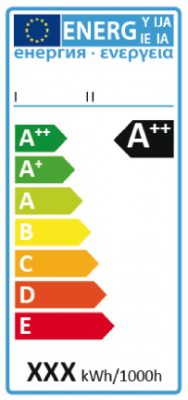
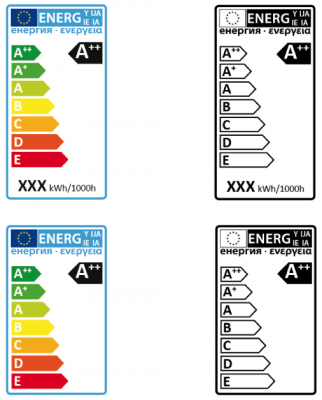
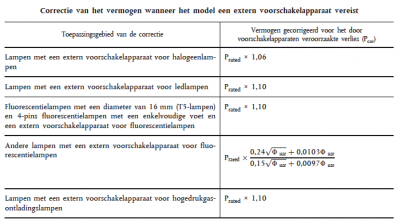
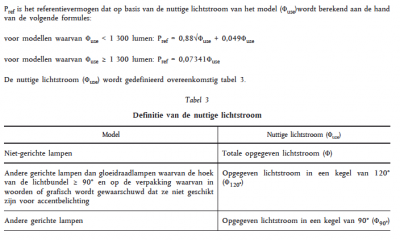
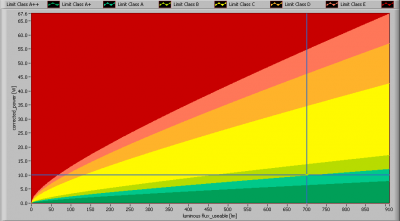
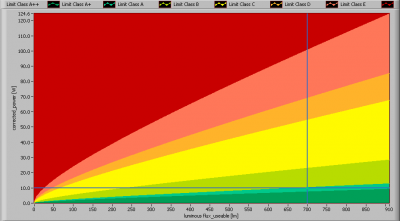



Most popular posts